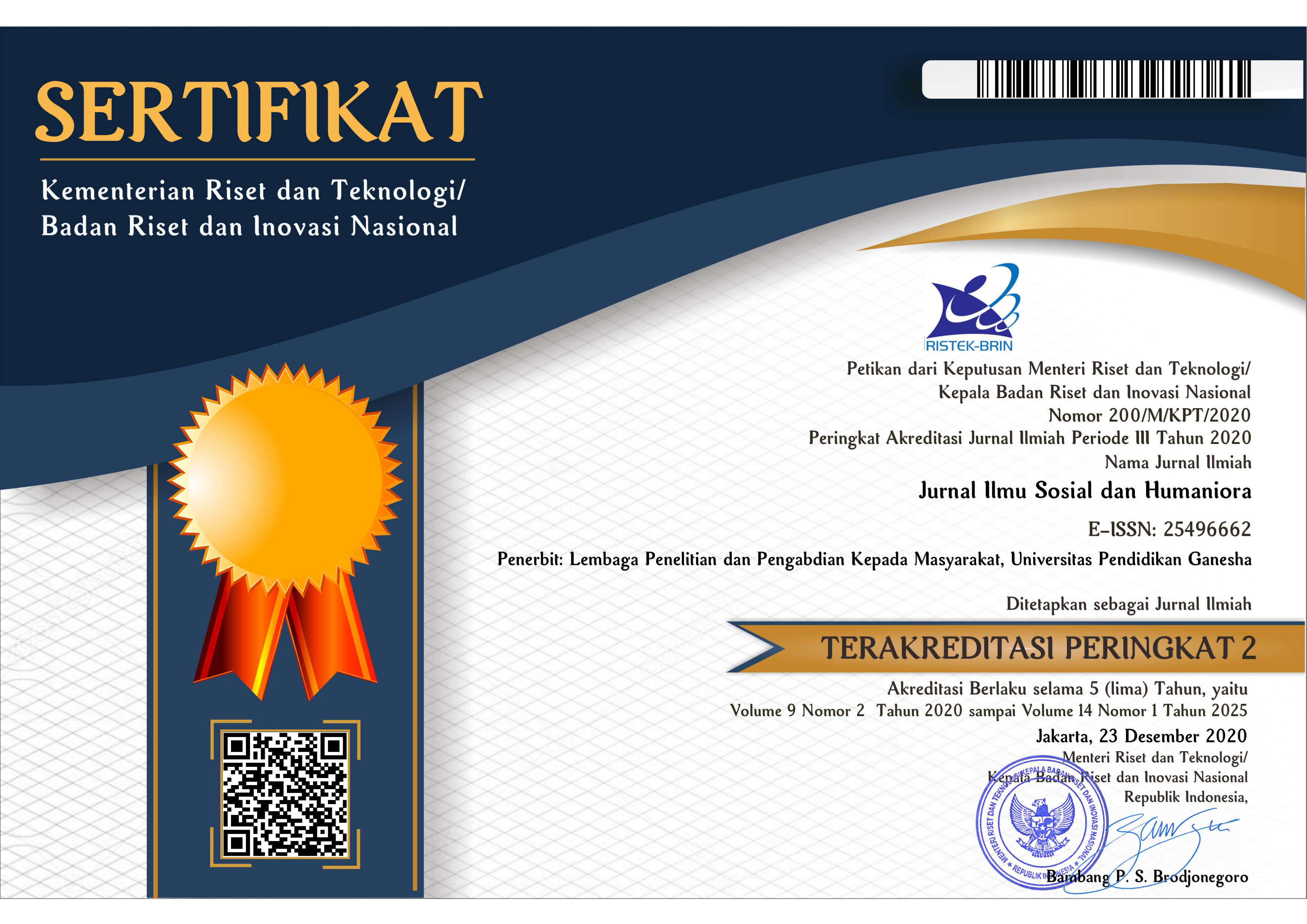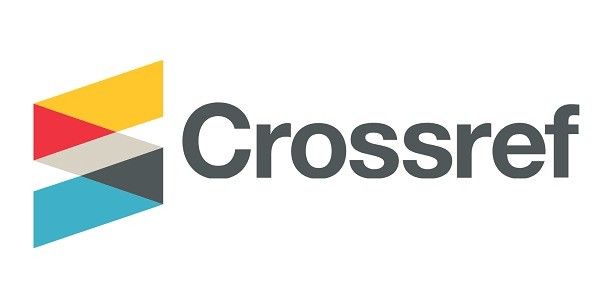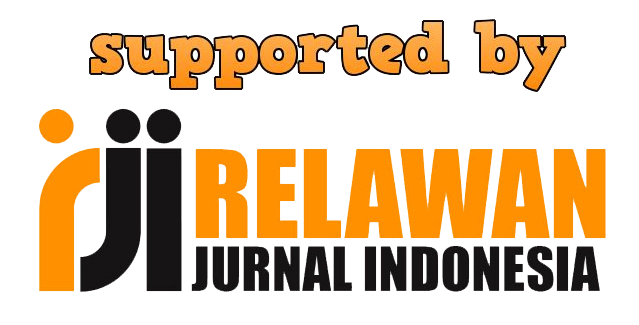Interpretation of Javanese Ethics in Handling Deviant Behavior of Adolescents: An Interpretative Phenomenological Analysis
DOI:
https://doi.org/10.23887/jish.v13i3.83968Keywords:
Javanese Ethics, Deviant Behavior of Adolescents, Interpretative Phenomenological AnalysisAbstract
This study aims to understand the application of Javanese ethical values in dealing with deviant behavior of adolescents in Bandengan Fishing Village, Kendal Regency. Using Interpretive Phenomenological Analysis (IPA), this study involved five adolescents with a history of deviant behavior and community leaders active in Javanese ethics-based intervention programs. Data was collected through in-depth interviews (January–April 2024) and Focus Group Discussions (FGDs) (May–June 2024) that explored perceptions, experiences, and strategies for overcoming social stigma. The study participants, consisting of adolescents with a history of deviant behavior and community leaders who are considered to have insight into Javanese ethics, offered diverse perspectives on concepts such as gotong royong (cooperation), tepo seliro (mutual respect), and rukun (harmony) in the context of behavior formation. The analysis results found main themes, including the importance of social acceptance in building adolescents' sense of self-esteem, the role of community support in building positive behavior, and the influence of instilling local values in strengthening adolescent mental resilience. These findings suggest that Javanese ethical values not only serve as a method of handling behavior but also as a tool to reduce stigma and improve social integration for adolescents who engage in deviant behavior. In the long term, these results can be implemented in social practice to develop more effective and contextually relevant models of culture-based interventions. This research makes an important contribution to the social intervention approach by offering insights into the potential of local ethics in supporting the formation of adolescent characters in a community-based environment.
References
Adegboyega, L. O., Ayoola, V. A., & Muhammed, S. (2019). Influence of Peer Pressure on Sexual Behavior of Undergraduates in Kwara State. Anatolian Journal of Education, 4(1), 49–58. https://doi.org/10.29333/aje.2019.415a
Adeyemii, B. . (2019). Influence of Peer Pressure on Junior Secondary School Students’ Academic Performance in Social Studies in Mushin Local Government Area, Lagos State. South Asian Research Journal of Humanities and Social Sciences, 01(03), 233–239. https://doi.org/10.36346/sarjhss.2019.v01i03.008
Animosa, L. H., Lindstrom Johnson, S., & Cheng, T. L. (2018). “I Used to Be Wild”: Adolescent Perspectives on the Influence of Family, Peers, School, and Neighborhood on Positive Behavioral Transition. Youth and Society, 50(1), 49–74. https://doi.org/10.1177/0044118X15586146
Aroonmalini, B. (2016). Positive Impacts of Peer Pressure: A Systematic Review. Indian Journal of Positive Psychology, 7(1), 127–130.
Bandura, A. (1983). Self-efficacy determinants of anticipated fears and calamities. Journal of Personality and Social Psychology, 45(2), 464–469. https://doi.org/10.1037/0022-3514.45.2.464
Beazley, H. (2003). Voices from the margins: Street children’s subcultures in indonesia. Children’s Geographies, 1(2), 181–200. https://doi.org/10.1080/14733280302198
Bertrand, R. (2008). A Foucauldian, non-intentionalist analysis of modern Javanese ethics. International Social Science Journal, 59(191), 75–93. https://doi.org/10.1111/j.1468-2451.2009.00681.x
Boehnke, K., Dettenborn, H., Horstmann, K., & Schmieschek, M. (1992). Constraint and inclination for reducing complexity--social cognitive aspects of moral judgment in children. Zeitschrift für Psychologie mit Zeitschrift für angewandte Psychologie, 200(4), 371–390. https://www.scopus.com/inward/record.uri?eid=2-s2.0-0027027013&partnerID=40&md5=03104c2544ef9d799f9838a81a91edd2
Bulut, S., Bukhori, B., & Saadati, S. A. (2024). Journal of Psychosociological Research in Family and Culture. Journal of Psycosociological Research in Family and Culture, 3(1). https://www.researchgate.net/profile/Solmaz-Bulut/publication/380131182_The_Psychosocial_Impact_of_Migration_on_Family_Roles_and_Identity_Authors/links/66314fc47091b94e93e9c90a/The-Psychosocial-Impact-of-Migration-on-Family-Roles-and-Identity-Authors.pdf
Damon, W., Mariano, J., & Cotton Bronk, K. (2003). The development of purpose during adolescence. Applied Developmental Science - APPL DEV SCI, 7(3), 119–128.
Deflem, M., & Featherstone, R. (2003). Anomie and Strain: Context and Consequences of Merton’s Two Theories. Sociological Inquiry, 73(4), 471–489.
Dettenborn, H., & Boehnke, K. (1994). The Relationship of Socio-cognitive Oversimplification and the Social Behaviour of Adolescents. Educational Psychology, 14(4), 385–402. https://doi.org/10.1080/0144341940140402
Durá, L., & Singhal, A. (2010). Utilizing a positive deviance approach to reduce girls’ trafficking in indonesia: Asset-based communicative acts that make a difference. Journal of Creative Communications, 4(1), 1–17. https://doi.org/10.1177/097325861000400101
Eatough, V., & Smith, J. A. (2017). Interpretative phenomenological analysis. In: Willig, C. and Stainton-Rogers, W. (eds.) Handbook of Qualitative Psychology. In Handbook of Qualitative Psychology.
Garbacz, S. A., Herman, K. C., Thompson, A. M., & Reinke, W. M. (2017). Family engagement in education and intervention: Implementation and evaluation to maximize family, school, and student outcomes. Journal of School Psychology, 62(April), 1–10. https://doi.org/10.1016/j.jsp.2017.04.002
García-Poole, C., Byrne, S., & Rodrigo, M. J. (2018). Youth-led activities associated with positive competence changes in a community-based program for adolescents. Child and Family Social Work, 23(4), 599–608. https://doi.org/10.1111/cfs.12450
Gikonyo, & Njagi, K. (2016). The influence of demographic factors on peer pressure among secondary school adolescents in Nyahururu Laikipia County. Research on Humanities and Social Sciences, 6(22), 87–91.
Harmadi, M. B. R., Adiguna, A. J., Putri, D. C. S., Banuati, N., Pambudi, A. L., & Broto, L. S. W. (2022). Moral Education and Social Attitudes of the Young Generation: Challenges for Indonesia and the International Community. Jurnal Panjar: Pengabdian Bidang Pembelajaran, 4(2), 173–222. https://journal.unnes.ac.id/sju/index.php/panjar/index
Hirschi, T. (1969). Key idea: Hirschi’s social bond/social control theory. Key Ideas in Criminology and Criminal Justice, 55–69.
Hopner, V., & Liu, J. H. (2021). Relational ethics and epistemology: The case for complementary first principles in psychology. Theory and Psychology, 31(2), 179–198. https://doi.org/10.1177/0959354320974103
Ingersgaard, M. V., Fridh, M. K., Thorsteinsson, T., Adamsen, L., Schmiegelow, K., & Bækgaard Larsen, H. (2021). A qualitative study of adolescent cancer survivors perspectives on social support from healthy peers – A RESPECT study. Journal of Advanced Nursing, 77(4), 1911–1920. https://doi.org/10.1111/jan.14732
Jaccard, J. (2016). The prevention of problem behaviors in adolescents and young adults: Perspectives on theory and practice. Journal of the Society for Social Work and Research, 7(4), 585–613. https://doi.org/10.1086/689354
Jahanzeb, S., & Fatima, T. (2018). How Workplace Ostracism Influences Interpersonal Deviance: The Mediating Role of Defensive Silence and Emotional Exhaustion. Journal of Business and Psychology, 33(6), 779–791. https://doi.org/10.1007/s10869-017-9525-6
Kwasnicka, D., Dombrowski, S. U., White, M., & Sniehotta, F. (2016). Theoretical explanations for maintenance of behaviour change: a systematic review of behaviour theories. Health Psychology Review, 10(3), 277–296. https://doi.org/10.1080/17437199.2016.1151372
Magnis-Suseno, F. (1997). avanese Etics and World-View. The Javanese Idea of the Good Life. Penerbit PT Gramedia Pustaka Utama.
Morris, M. W., Hong, Y. yi, Chiu, C. yue, & Liu, Z. (2015). Normology: Integrating insights about social norms to understand cultural dynamics. Organizational Behavior and Human Decision Processes, 129, 1–13. https://doi.org/10.1016/j.obhdp.2015.03.001
Mthoko, H. L., & Pade-Khene, C. (2013). Towards a theoretical framework on ethical practice in ICT4D programmes. Information Development, 29(1), 36–53. https://doi.org/10.1177/0266666912449456
Mujahidin, E., Wibowo, R., Rangkuti, Z., Alwahid, M. A., & Siswanty, K. (2021). Jurnal basicedu. Jurnal Basicedu, 5(4), 1778–1786.
Musanje, K., Flaxman, P. E., Id, R. M., & Kasujja, R. (2024). Social validity of acceptance-based workplace mental health training for use in a low resource setting . A qualitative study with Ugandan mental health providers. PLOS Mental Health, 1–19. https://doi.org/10.1371/journal.pmen.0000127
Popp, T. K., & You, H. K. (2016). Family involvement in early intervention service planning: Links to parental satisfaction and self-efficacy. Journal of Early Childhood Research, 14(3), 333–346. https://doi.org/10.1177/1476718X14552945
Rahapsari, S. (2022). The quest of finding the self in the Bedhaya: Unravelling the psychological significance of the Javanese sacred dance. Culture and Psychology, 28(3), 413–432. https://doi.org/10.1177/1354067X211047441
Silke, C., Brady, B., Boylan, C., & Dolan, P. (2021). Empathy, Social Responsibility, and Civic Behavior Among Irish Adolescents: A Socio-Contextual Approach. Journal of Early Adolescence, 41(7), 996–1019. https://doi.org/10.1177/0272431620977658
Smith, J. D., St. George, S. M., & Prado, G. (2017). Family-centered positive behavior support interventions in early childhood to prevent obesity. Child Development, 88(2), 427–435. https://doi.org/10.1111/cdev.12738
Sobaya, S., Pusparini, M. D., & Achiria, S. (2023). Javanese local wisdom values for development from an Islamic perspective. Journal of Islamic Economics Lariba, 9(1), 57–78. https://doi.org/10.20885/jielariba.vol9.iss1.art4
Sorkhabi, N. (2005). Applicability of Baumrind’s parent typology to collective cultures: Analysis of cultural explanations of parent socialization effects. International Journal of Behavioral Development, 29(6), 552–563. https://doi.org/10.1080/01650250500172640
Suhartini, S., Sekarningrum, B., Sulaeman, M. M., & Gunawan, W. (2019). Social construction of student behavior through character education based on local wisdom. Journal of Social Studies Education Research, 10(3), 276–291.
Sukino, S., & Utami, S. P. (2020). Islamic Religious Education Models in Preventing Negative Behaviors of Youth and Adolescents. Tarbawi: Jurnal Keilmuan Manajemen Pendidikan, 6(02), 193. https://doi.org/10.32678/tarbawi.v6i02.3539
Suprapto, S., Widodo, S. T., Suwandi, S., Wardani, N. E., Hanun, F., Mukodi, M., Nurlina, L., & Pamungkas, O. Y. (2024). Reflections on Social Dimensions, Symbolic Politics, and Educational Values: A Case of Javanese Poetry. International Journal of Society, Culture and Language, 12(1), 15–26. https://doi.org/10.22034/ijscl.2023.2006953.3095
Tarhini, A., Hone, K., Liu, X., & Tarhini, T. (2017). Examining the moderating effect of individual-level cultural values on users’ acceptance of E-learning in developing countries: a structural equation modeling of an extended technology acceptance model. Interactive Learning Environments, 25(3), 306–328. https://doi.org/10.1080/10494820.2015.1122635
Tuffour, I. (2017). A Critical Overview of Interpretative Phenomenological Analysis: A Contemporary Qualitative Research Approach. Journal of Healthcare Communications, 02(04), 1–5. https://doi.org/10.4172/2472-1654.100093
Wai Weng, H. (2024). Packaging, Persuasion and Propaganda: Popular Preaching and Islamic Counter-publics in Indonesia. Asian Studies Review, 48(1), 70–85. https://doi.org/10.1080/10357823.2022.2052801
Widayati, W., Winanto, W., Arpangi, A., & Rahmawati, A. F. (2022). An Efforts to Prevent Juvenile Delinquency to Prepare the Nation’s Successful Generation. International Journal of Law Society Services, 2(2), 66. https://doi.org/10.26532/ijlss.v2i2.26716
Yunengsih, W., & Setiawan, A. (2021). Contribution of pornographic exposure and addiction to risky sexual behavior in adolescents. Journal of Public Health Research, 10. https://doi.org/10.4081/jphr.2021.2333
Downloads
Published
Issue
Section
License
Copyright (c) 2024 Suprihatiningsih Suprihatiningsih, Tri Marhaeni Pudji Astuti, Agustinus Sugeng Priyanto, Sunarto Sunarto

This work is licensed under a Creative Commons Attribution-ShareAlike 4.0 International License.
Authors who publish with the Jurnal Ilmu Sosial dan Humaniora agree to the following terms:
- Authors retain copyright and grant the journal the right of first publication with the work simultaneously licensed under a Creative Commons Attribution License (CC BY-SA 4.0) that allows others to share the work with an acknowledgment of the work's authorship and initial publication in this journal.
- Authors are able to enter into separate, additional contractual arrangements for the non-exclusive distribution of the journal's published version of the work (e.g., post it to an institutional repository or publish it in a book), with an acknowledgment of its initial publication in this journal.
- Authors are permitted and encouraged to post their work online (e.g., in institutional repositories or on their website) prior to and during the submission process, as it can lead to productive exchanges, as well as earlier and greater citation of published work. (See The Effect of Open Access)


.png)
.png)













